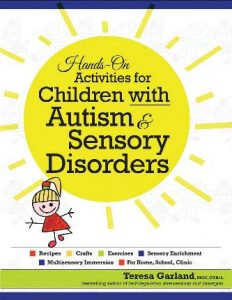By Luz Flores, librarian at Noyes Library for Young Children, Montgomery County Public Libraries. All book covers are provided by their publishers.
For Developmental Disabilities Awareness Month, dive into the stories of kids, teens and adults who experience the world a bit differently. These tales touch on the real-life struggles of living with a disability and the joys that come from friendships, growth and understanding.
Picture Books
“Benji, the Bad Day, and Me” by Sally J. Pla, illustrated by Ken Min
The whole world is against Sammy. He is having bad, bad day, and when he comes home, he realizes his little brother, Benji, is having a bad day, too, and has retreated to his box. Having an autistic little brother can be hard, but this story shows that brotherly love can shine through even on the bad days.
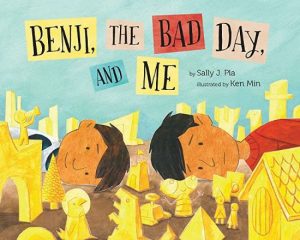
“Can Bears Ski?” by Raymond Antrobus, illustrated by Polly Dunbar
“Can bears ski?” is a question that Little Bear keeps hearing from Dad Bear, the TV and his teachers and friends at school. This colorful picture book follows Little Bear as he navigates the world with childhood hearing loss, visits an audiologist and, with the help of hearing aids, finally learns the answer to the question, “Can bears ski?”
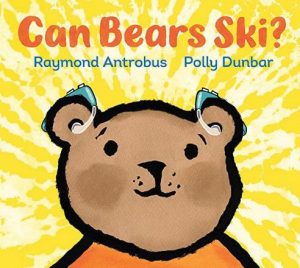
“It Was Supposed to Be Sunny” by Samantha Cotterill
Changes in routine can be hard for any kid, but especially for kids on the autism spectrum. When Laila starts to feel okay about moving her birthday unicorn obstacle course indoors to avoid a thunderstorm, disaster strikes and she starts to feel anxiety on top of anxiety. But after time with her service dog and a little birthday magic, Laila realizes that unexpected surprises aren’t always a bad thing.
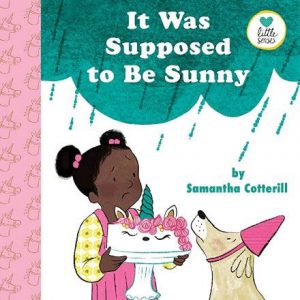
“The Mitten String” by Jennifer Rosner, illustrated by Kristina Swarner
This Jewish folktale follows Ruthie Tober, a girl whose family raises sheep and makes wool for their local market. One day, Ruthie meets a deaf woman and her baby by a broken wagon, and when the woman, Bayla, accepts an invitation to stay at Ruthie’s family home for the night, Ruthie watches in amazement as Bayla uses her hand to sign to her baby.
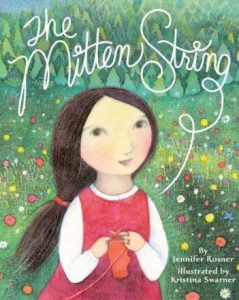
Early Elementary
“Isaac and His Amazing Asperger Superpowers!” by Melanie Walsh
Isaac isn’t like his brother or his classmates at school. He has super sensitive hearing and can sometimes hear the lights at school. He has so much energy he can spend hours jumping on his trampoline. His super brain remembers lots of information. Isaac knows his superpowers come from his Asperger’s sydrome. In this straightforward story, you find out how Isaac navigates his world with Asperger’s and how sometimes it can be very hard to keep his thoughts to himself or make eye contact with others. But with the help of his family, Isaac knows that it’s OK to be different.
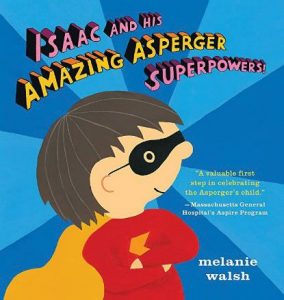
“Aven Green, Sleuthing Machine” by Dusti Bowling, illustrated by Gina Perry
Aven Green, detective extraordinaire, was born without arms, but that doesn’t stop her from solving all kinds of mysteries. In this first installment of her series, Aven uses her super brain to solve two mysteries: who is stealing food at her elementary school and what has happened to her grandmother’s beloved dog. All throughout the story, Aven is very matter of fact about not having arms and about how she uses her feet to help her do things—especially solving mysteries.
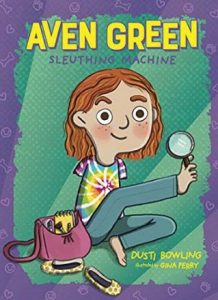
Middle Grade
“Rules” by Cynthia Lord
Twelve-year-old Catherine thinks it’s hard to find her own identity when she’s helping take care of David, her autistic brother. Over the summer, Catherine makes two friends—Kristi, the new girl next door, and everything Catherine would like to be, and Jason, a nonverbal boy confined to a wheelchair who uses illustrated cards to communicate. Catherine worries David’s outbursts might jeopardize her friendship with Kristi, and as Jason and Catherine grow closer, she is faced with the question, “Would she be okay taking Jason to the dance?”
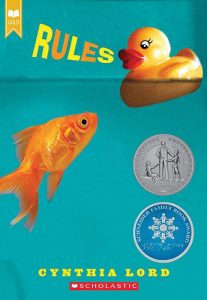
“Real” by Carol Cujec and Peyton Goddard
Charity is a nonverbal autistic girl that loves gummy bears, and she worries that no one will know how smart she is because she can’t talk and her body has outbursts she can’t control. But underneath it all, Charity is a very intelligent, empathic and kind girl. When her family sends her to a public junior high school, Charity is faced with the question: Will people finally see her as the intelligent young girl she is? With the support of others, Charity finally finds her voice.
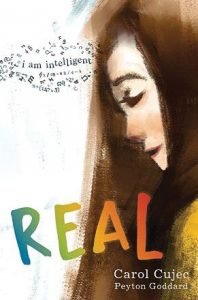
“The Distance Between Me and the Cherry Tree” by Paola Peretti, translated by Denise Muir, illustrated by Carolina Rabei
Nine-year-old Mafalda was diagnosed with Stargardt disease, and she struggles emotionally and physically trying to get used to her progressive vision loss. When she meets Filippo and Estella, their friendship helps Malfalda find the courage and strength to accept her eventual loss. Told through five parts, each titled after the increasingly shorter distance from which she can see the cherry tree at school, this Italian import shows readers that “Fear will always be there, but [you have to] live your life. [And] Never ever give up.”
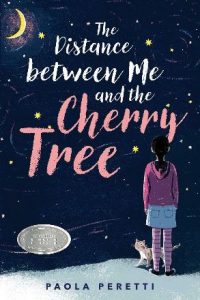
Teen
“Say What You Will” by Cammie McGovern
“Say What You Will” follows the lives of Amy, a girl born with cerebral palsy, and Matthew, a boy with obsessive compulsive disorder (OCD) and severe anxiety. When Matthew volunteers as one of Amy’s student aides, both teens grow closer, and they challenge and help each other grow as well. When they realize they are falling in love with each other, their friendship is challenged with the world forever seeing them as outsiders.
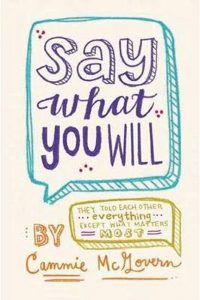
“Turning” by Joy L. Smith
Genie has dreamed and worked hard at becoming a professional ballerina, but her dreams are dashed when she has a terrible fall that lands her in a wheelchair. At physical therapy, she meets Kyle, an athlete with a traumatic brain injury that also cost him a future he envisioned for himself. Genie learns that sometimes you just need to forge a new path for yourself. With Kyle’s support, as well as her best friend’s encouragement, Genie’s finds the strength to heal from her past and find her love of ballet again.
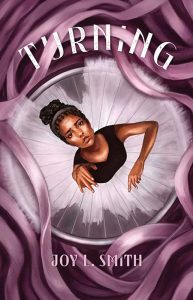
Parents
“Everyday Games for Sensory Processing Disorder: 100 playful activities to empower children with sensory differences” by Barbara Sher
Understanding that kids learn through fun, the author has combined a series of games and fun activities that are designed to remediate sensory processing issues through games and activities that can be done right at home.
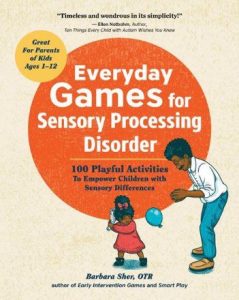
“Hands-on Activities for Children with Autism & Sensory Disorders” by Teresa Garland
With almost 200 activities and interventions, this illustrated guide highlights step-by-step activities that can help anyone working with children who have autism and sensory disorders.
